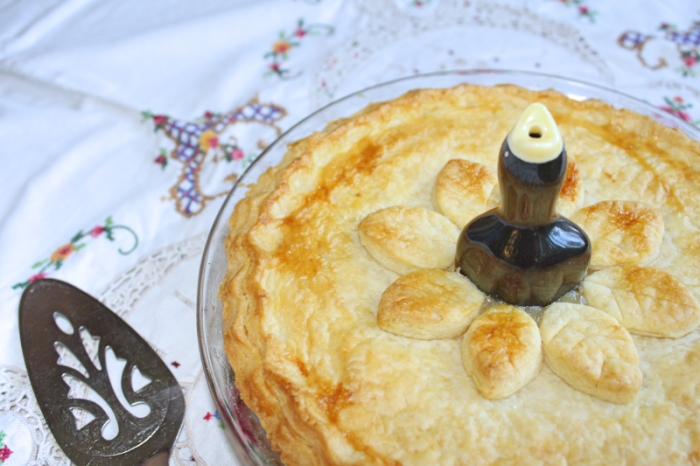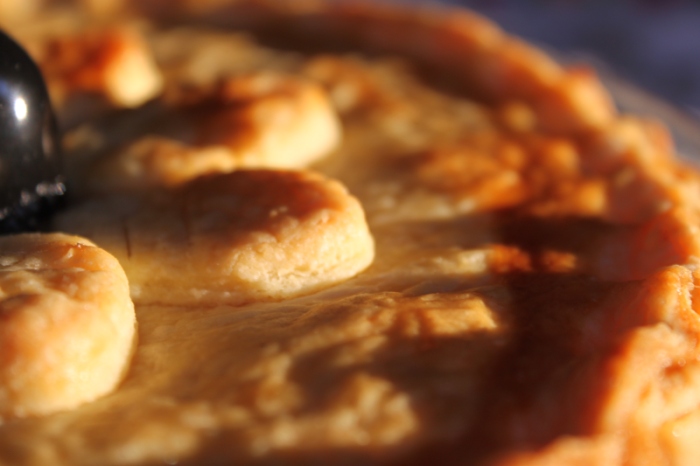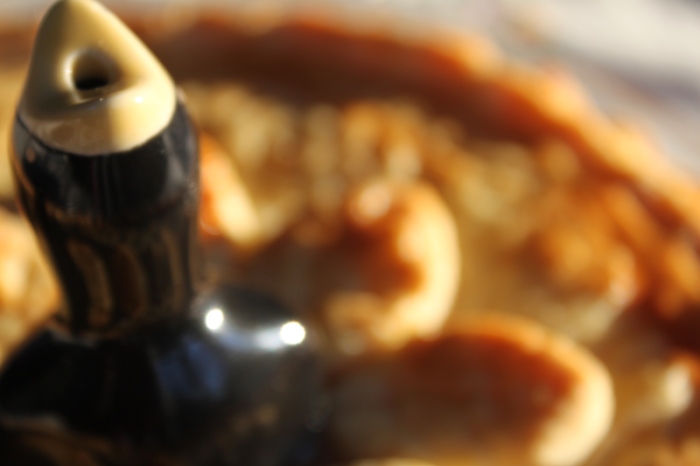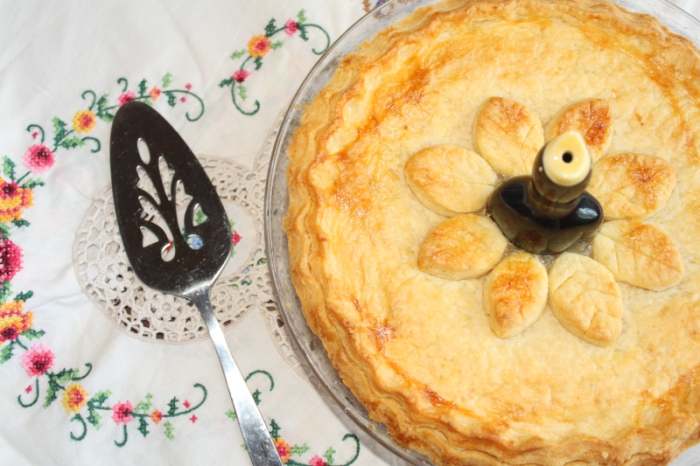Firstly, apologies that this post is a little late. I’ve been travelling and even though it was all cooked it’s just taken a while to get around to writing it all up.
One of my favourite things about studying/exploring/recreating social and domestic history is the way that it lets us catch a glimpse of women in the past. Although the past couple of decades has seen a real, purposeful shift from looking at history as simply the lives and deeds of famous men, it is still rare to get an insight into the everyday life of the scullery maid, the fishwife or the currency lass. Partially of course, that’s simply due to the lack of sources available for these women, even the literate ones. Even in the field of food history which one assumes would have an over-abundance of sources written and used by women, the early sources are dominated by male professional chefs writing for an audience of other male chefs.
Women have of course been collecting recipes for centuries, jotting them down on scraps of paper or carefully filling notebooks to be handed down the generations, but few were published before the late 17th century. Anna Wecker’s cookbook, Ein Köstlich new Kochbuch (A Delicious New Cookery Book), was published in 1598 and is the first known to be written by a woman, but this was extremely unusual and in England published cookbooks by women didn’t become available until much later. Hannah Woolley was a pioneer with her book The Ladies Directory which came out in 1661. Her series of successful cookbooks (which also contained medical knowledge and tips for domestic servants) made her one of the first women to earn her living from her pen.
By the 19th century the tide had thoroughly turned with a flood of female authors, many of whom are still household names (Isabella Beeton, Eliza Acton, Hannah Glasse and Elizabeth Raffald come to mind). But by then there was a new frontier to conquer, the newspaper. Today’s recipe comes from a newspaper column written by one of Australia’s first female journalists, Mary Hannay Foott.
A published poet, the beautifully haunting ‘Where the Pelican Builds’ is the most well known (you can read it here), Mary made regular contributions to The Queenslander and in 1886 joined the staff there as editor, and often writer, of the women’s page. She wrote under the nom-de-plume ‘La Quenouille’ (it means the distaff – an implement used for spinning thread; or the female side of the family) to dispense advice on cooking and cleaning, the latest fashions, handicrafts and society gossip.
I’m really excited to have discovered Mary’s story (you can read a short biography here or Patricia Clarke has written a more extensive biography in the Queensland History Journal[1]) and to be able to share a little bit of it here. Even though she was a pioneering female journalist in Australia and one of Queensland’s first female poets, her story, like that of so many others, has been all but forgotten. So in memory of Mary Hannay Foott, and her correspondent in Bundaberg who provided this recipe, I present to you a Lemon Pie.
The Recipe
Lemon Pie – The juice and grated rind of a 1 lemon, 1 cup of water, 1 cup of sugar, 1 egg, 1 tablespoonful of cornflour, a piece of butter the size of a small egg. Boil the water, wet the cornflour with a little cold water and stir it in. When it boils up pour it on the sugar and butter. After it cools add the egg and lemon. Bake with an upper and under crust.[2]
This recipe is so straight forward and easy to use that I don’t think I need to provide a redaction for you (plus I’m already running late getting this post up). I used a simple short-crust pastry, just be sure you don’t make it too sweet because the filling is already very sweet. I didn’t blind bake the base, but you easily could if you wanted the bottom to be a little crisper, or you could line little tartlet cases with pastry and use them instead. Add the filling, a top if you want to and decorate with the scraps. Brush the whole thing with egg wash and bake at 180˚C for 20-25 mins or until golden.
The other thing that I did with this recipe was use my lovely new pie bird. It’s a bit anachronistic since, although pie funnels were certainly in use when this recipe was published in 1891, they didn’t take on the classic blackbird shape until the 1930s. Still, it was just too cute to resist!
Isn’t he just adorable?
The Recipe: Lemon Pie (available here)
The Date: 1891
How did you make it? See above.
Time to complete?: 1 hr approx., longer if you have to chill your pastry.
How successful was it?: Delicious, sweet and creamy lemon filling in a buttery pastry.
How accurate?: I think it was actually pretty close, I used a pastry recipe from one of Mrs Beeton’s cookbooks of a similar date. I had a couple of quandaries like whether to blind bake or not and how much butter is the size of an egg (I used 60g), but I don’t think they really subtracted from the accuracy of the dish. The main inaccuracy was the use of the pie bird, but like I said, I just couldn’t resist the chance to use it.
Pie-related Links
Find out how to use a pie bird here
Learn 3 different ways to crimp a pie crust here
[1] Patricia Clarke, “Queensland’s First Professional Woman Journalist: Mary Hannay Foott,” Queensland History Journal 22, no. 4 (March 2014): 302–15.
[2] “THE HOUSEWIFE. FRIENDS IN COUNCIL. LEMONS.,” The Queenslander, June 13, 1891.
Bibliography
Clarke, Patricia. “Queensland’s First Professional Woman Journalist: Mary Hannay Foott.” Queensland History Journal 22, no. 4 (March 2014): 302–15.
“THE HOUSEWIFE. FRIENDS IN COUNCIL. LEMONS.” The Queenslander. June 13, 1891.




Leanda Connor says:
Another fantastic recipe! I love the pie bird so cute…
August 17, 2014 — 10:44 pm